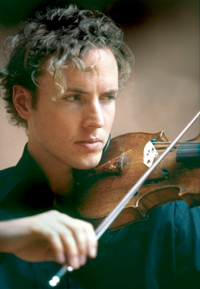by Robert Rollin

The liveliest and perhaps most topical piece was An Orkney Wedding, With Sunrise, by Sir Peter Maxwell Davies, the only living composer on the program. Born in 1934, Davies has had an interesting career spanning early studies at the Royal Manchester College of Music, three years at Princeton under Roger Sessions and Milton Babbitt, and a year in Australia as composer-in-residence at the University of Adelaide. He returned to England in the late 1960’s to found with his collaborator, Harrison Birtwistle, the Fires of London, a wildly experimental group that gave him a rather notorious reputation. In 1971 he moved to the Orkney Islands off the North Coast of Scotland where he has has remained ever since.
An Orkney Wedding, With Sunrise was commissioned by the Boston Symphony and premiered by the Boston Pops under John Williams in May, 1985. It employs a traditional classical orchestra with the unusual addition of a bagpiper, dressed in traditional Scottish regalia, who parades onto the stage, entering from the back of the hall, and taking the soloist’s position only as the piece concludes. The twelve-minute piece opens with the guests’ arrival during a violent storm. The musicians get there early and seem to avail themselves copiously of the liquor for the party. The piece evolves through the processional, more and more drinking, some quotation of Scottish folk tunes, and finally everyone seems to pass out. Later the partygoers walk home across the island until there is a glorious sunrise.
The Symphony’s performance fairly sparkled. Principal oboe Cynthia Watson played her solos expressively, as did principal clarinet Deborah Alexander. The percussion section was also excellent, particularly in the timpani and clever wood block part. Some nice interchanges between the principal trumpet and horn soon led to a marvelous solo by concertmaster Calvin Lewis. Bagpiper Bentley Wall of the North Coast Pipe Band in Cleveland closed the piece with fine solo work. The Youngstown audience thoroughly enjoyed the piece.
Felix Mendelssohn’s Symphony No 3 in A Minor (“Scottish”), Op. 56 was actually the composer’s last symphony, completed and premiered in 1842, even though there are two higher numbered symphonies published later than this one. Mendelssohn had visited Scotland on a walking trip with a friend in 1829. Years later he finally wrote the piece which evokes the flavor of Scotland without any direct quotation of folk tunes.
The Introduction to the first movement was gorgeous in the YSO performance, particularly after the opening, when all the violins entered for the first time with an expressive, almost recitative-like melody. The beautiful six-eight tune that starts the movement proper was lively and lilting. Some nice interchange among first violins, clarinet, and bassoon highlighted the first theme. The second theme group also had beautiful minor melodies. This theme returned two more times, each time seemingly more beautiful than its predecessor. The woodwind section was especially good in its counterpoints and in an interesting wide doubling between flute and bassoon.
The Scherzo was delightful and perhaps closest to Scottish music in its use of the “Scottish snap,” the accentuation of the first beat of a two four meter with a long held syncopation on the second eighth-note. The movement had a lovely short fugato, nice doubling of violas and cello on the main melody, and some pastoral, Beethoven-like horn fifths.
The Adagio Cantabile began with another attractive first-violin tune, this time accompanied by plucked second violins and violas, as the lower strings remained bowed. The second theme was somewhat more dramatic, with fuller textures. The Allegro guerriero served as a rapid lead up to the Finale maestoso.
Each had two main themes. The minor flavor dominated, and the second theme of the Allegro guerriero had greater tension and a preponderance of diminished seventh chords. The Finale moved slightly slower. The fourth and last theme modulated to a major key and closed the piece with a ray of sunshine. Mendelssohn’s instruction not to leave much time between movements made the Symphony a challenge to absorb, though the beautiful melodies and wonderful orchestration had much to be admired.
Max Bruch’s Scottish Fantasy, Op. 46 featured violin soloist Timothy Fain. The piece lived up to its title by quoting some Scottish folk songs. Fain showed excellent technique, though at times it was difficult to hear his solo part. His gestures seemed larger than the actual sound that projected from his instrument. The opening Grave had a good deal of charm, as did the third movement, Andante sostenuto. The second, Allegro, had the flavor of the middle section of a Chopin Mazurka, with pedal points and sonorous open intervals. The Finale, on the other hand seemed to go on too long in its repetitive four-four rhythmic patterns. Fain played a rather conservative piece as an encore, which he said Phillip Glass had written for him.
Published on ClevelandClassical.com March 18, 2014
Click here for a printable version of this article.



